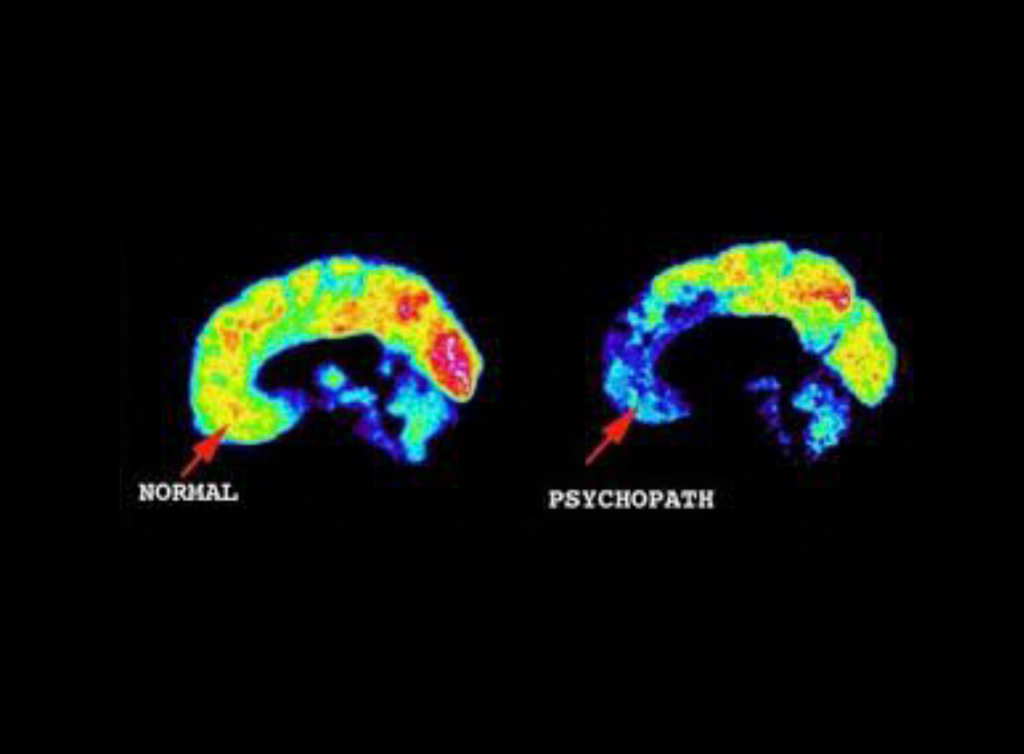
“To this day, I don’t know what started the killings. The person to blame is sitting right across from you. It’s the only person. Not parents, not society, not pornography. I mean, those are just excuses.”1 Jeffrey Dahmer was a serial killer known for cannibalism and the dismemberment of his victims. He specifically targeted men. However, all the men were of various ages and races. There are many psychological factors that led to the lifestyle of this “Milwaukee Cannibal.”2

On May 21, 1960 in Milwaukee, Wisconsin the infamous Jeffrey Lionel Dahmer was born. From a very young age, he held a fascination with dead animals.3 His father, Lionel, was a research chemist who practiced bone bleaching on the remains of animals that Jeffrey and he found underneath their home. Jeffrey was “oddly thrilled” by the sound the bones would make. Dahmer was curious as to what would happen if chicken bones were placed in bleach. Lionel was very pleased by Jeffrey’s curiosity, so he demonstrated how to safely bleach and preserve animal remains. As a father-son activity, they would both bleach the connective tissue and hair off animal corpses. Jeffrey was showing signs of observational learning—observing and modeling another individual’s behavior, attitudes, or emotional expressions—because he wanted to do what his father did. He began collecting butterflies and dragonflies. Then, he went on to collecting the carcasses of animals that he found along road sides. Jeffrey would dismember these animals and store their parts in a jar located in the family’s toolshed. He was curious as to how animals fitted together.4 Jeffrey decapitated the carcass of a dog while nailing its body to a tree and impaling its skull on a stake with a wooden cross. With that being said, many would think that Dahmer had some sort of psychological disorder, and they would be correct.5
Typically, when undergoing the process of puberty, boys transitioning into young men tend to go out of their comfort zone and become more socially engaged with their peers and community. This was not the case for the notorious Milwaukee Cannibal. Dahmer was unfortunately part of the small percentage of people who suffered from psychopathy, scientifically known as antisocial personality disorder (ASPD). Those diagnosed with ASPD tend to lie, break the law, act impulsively, and lack regard for their own safety or the safety of others. There is a chromosome abnormality that is primarily discovered in men. It fosters a strong inclination to kill during puberty. Psychopaths never fully develop the sense of attachment or belonging to the world. This leads psychopaths to kill without being able to understand or share the feelings of another human being.6 “I don’t even know if I have the capacity for normal emotions or not because I haven’t cried for a long time. You just stifle them for so long that maybe you lose them, partially at least. I don’t know.”7 There are two areas of a psychopath’s brain that are both less responsive as well as smaller than the normal, every day human being’s brains. These two areas of the brain are called the orbitofrontal cortex and the amygdala. When there is low activity in the orbitofrontal cortex, there are fewer usual or typical behaviors, some of which would involve consuming alcohol, an increase in engagement with sexual intercourse or activities, and heightened state of aggression. The amygdala is primarily involved with the emotions of fear and deep regret.8 “Yes, I do have remorse, but I’m not even sure whether it is as profound as it should be. I’ve always wondered why I don’t feel more remorse.”9

As children, serial killers are known to have had encounters with some forms of abuse. In Dahmer’s case, the form of his abuse was molestation, which was executed by a neighborhood boy.10 However, Jeffrey consistently denied that this horrific encounter ever occurred. There is a high probability that the reason why young Jeffrey would consistently deny these allegations was due to embarrassment or stored up trauma. This may have sparked the Milwaukee Cannibal’s reasoning for targeting homosexual males. A serial killer typically has some form of motivation for murdering.11 A few of these motivations may include thrill seeking, money, a sense of power or domination, and the desire to rid the world of evil.12
Dahmer had started daydreaming about controlling and subjugating a conforming male partner. “It’s a process, it doesn’t happen overnight when you depersonalize another person and view them as just an object. An object for pleasure and not a living breathing human being. It seems to make it easier to do things you shouldn’t do,” Jeffrey stated.13 He had become completely overwhelmed with strong sexual desires for a neighborhood male jogger. Jeffrey would hide himself alongside the route of the male jogger in hope of making his first kill. Unfortunately for the Milwaukee Cannibal, the male jogger did not run on his normal route, forcing Dahmer to move on.14
It was not until a handful of weeks after his graduation in 1978, that Dahmer resurfaced and committed his first murder. Dahmer’s first victim, a hitchhiker, was an eighteen-year-old young male named Steven Mark Hicks. Jeffrey enticed Hicks through his clever charm, giving Hicks the impression that the two of them would share a few alcoholic beverages together. After much drinking at Dahmer’s house, Hicks felt the urge to go home before becoming unaware of the actions that were soon to occur. However, Dahmer was opposed to Hicks going home. In response to that thought, Jeffrey violently and aggressively knocked Hicks over the head twice with a ten-pound dumbbell. Once Hicks fell unconscious, the Milwaukee Cannibal strangled him to death and stripped him of his clothing. He then began to masturbate to the cold corpse on the floor as he wickedly stood right above it. The following day, Dahmer dragged the chilling corpse down to his basement, where he dismembered the body. He pared the flesh from the bones, dissolved the flesh in acid and proceeded to flush it down the toilet. Lastly, before scattering the bones in the woods behind his house, he took a sledgehammer and crushed them into small shards.15

Following the murder of his first victim, Steven Mark Hicks, Dahmer continued on to become a serial killer with a strong manipulating skill. “I made my fantasy life more powerful than my real one.”16 After discovering several Polaroid photos—there were a total of 74—of Dahmer’s victims taken over the years, he was arrested on July 22, 1991. Thereafter, a more thorough search was conducted by the police. They confiscated several body parts of various deceased male human beings, some of which included severed heads, skulls, human hearts, arm muscle, torsos, organs and flesh, skeletons, hands, genitals, and mummified scalp.17 During an interview with Inside Edition, Dahmer stated, “I probably would still be committing these crimes if this hadn’t happened, there’s no doubt I probably would be, I can’t think of anything that would have stopped me.”18
- Inside Edition, “Inside the Mind of Jeffrey Dahmer: Serial Killer’s Chilling Jailhouse Interview,” YouTube video, November 27, 2018, https://www.youtube.com/watch?v=iWjYsxaBjBI. ↵
- Salem Press Biographical Encyclopedia, 2019, s.v. “Jeffrey Dahmer,” by Jenephyr James. ↵
- Lorna Benson, “Animal Cruelty may be Sign of Deeper Human Problems,” MPRnews (website), July 6,2006, https://www.mprnews.org/story/2006/07/06/animalkillers. ↵
- The Scribner Encyclopedia of American Lives, 128-130. Vol. 4: 1994-1996, 2001, s.v. “Dahmer, Jeffrey Lionel.” ↵
- Nathan Carlin, “Confessions and Forgiveness: A Pastoral Reading of a Father’s Son by Lionel Dahmer,” Pastoral Psychology, vol. 60. no. 3 (2011): 382. ↵
- Allen A. Bartolomew, “Psychopathy, Sex, Chromosome Abnormality, and the Criminal Law,” Adelaide Law Review (1972): 275-276. https://www.austlii.edu.au/au/journals/AdelLawRw/1972/2.pdf. ↵
- Tom Philbin, I, Monster: Serial Killers in Their Own Chilling Words (Prometheus Books, 2011): 36. ↵
- Luiz Pessoa, The Cognitive-Emotional Brain: From Interactions to Integration (Cambridge, Massachusetts: The MIT Press, 2013): 10-11. ↵
- Inside Edition, “Inside the Mind of Jeffrey Dahmer: Serial Killer’s Chilling Jailhouse Interview,” YouTube video, November 27, 2018, https://www.youtube.com/watch?v=iWjYsxaBjBI. ↵
- Richard Tithecott, Of Men and Monsters: Jeffrey Dahmer and the Construction of the Serial Killer (Madison: University of Wisconsin Press, 1997), 80-81. ↵
- St. James Encyclopedia of Popular Culture, 499-502. Vol. 4. second ed., 2013, s.v. “Serial Killers,” by Phillip L. Simpson. ↵
- Dara C. Drawbridge, “Serial Killers: The Psychosocial Development of Humanity’s Worst Offenders,” Homicide Studies, vol. 20. no. 4 (2016): 339-341. ↵
- Inside Edition, “Inside the Mind of Jeffrey Dahmer: Serial Killer’s Chilling Jailhouse Interview,” YouTube video, November 27, 2018, https://www.youtube.com/watch?v=iWjYsxaBjBI. ↵
- Inside Edition, “Inside the Mind of Jeffrey Dahmer: Serial Killer’s Chilling Jailhouse Interview,” YouTube video, November 27, 2018, https://www.youtube.com/watch?v=iWjYsxaBjBI. ↵
- Catherine Purcell and Bruce A. Arrigo, The Psychology of Lust Murder: Paraphilia, Sexual Killing, and Serial Homicide (Amsterdam: Academic Press, 2006), 76-77. ↵
- Inside Edition, “Inside the Mind of Jeffrey Dahmer: Serial Killer’s Chilling Jailhouse Interview,” YouTube video, November 27, 2018, https://www.youtube.com/watch?v=iWjYsxaBjBI. ↵
- Federal Bureau of Investigation, “Jeffrey Lionel Dahmer,” https://vault.fbi.gov/jeffrey-lionel-dahmer/jeffrey-lionel-dahmer-part-01-of-19/view (accessed September 17, 2020). ↵
- Inside Edition, “Inside the Mind of Jeffrey Dahmer: Serial Killer’s Chilling Jailhouse Interview,” YouTube video, November 27, 2018, https://www.youtube.com/watch?v=iWjYsxaBjBI. ↵




54 comments
Nathaniel Tran
This article completely gives me chills all the way to the bone. It is just so mind-blowing and terrifying how another individual can put this much effort, time, and thought into killing another person. However, I did like how the author had chosen to tell the first kill of this serial killer as it allows the audience to see where from at this point it goes.
Evangelina Villegas
What a chilling article to read, but an interesting one indeed. I knew of Jeffrey Dahmer however I didn’t really know all of the details. From reading the article, you can get an understanding of how twisted Dahmer’s mind was. The way he grew up to become such a horrifying serial killer and the things that he did to his victims are just awful. The statement at the end of the article from Dahmer just makes it all the more frightening knowing that there could have been a chance where he wasn’t caught.
Eva Lizarraga
These kinds of stories are often more disturbing than spooky or scary stories—getting inside the mind of a psychopath and knowing that we could encounter someone like that at any point in our lives is terrifying! It’s interesting how both our nature, like our biological brains, and nurture, like childhood experiences, have an effect on the way we think, behave, and act for the rest of our lives.
Adam Alviar
I like the approach you took of displaying the acts of crime of the killer, while also showing his side and listing the causes that could have caused these tragedies. Although it is both scary and gruesome to think of how long he got away both the murders of these innocent people, while eating their bodies. It’s interesting to see how the brain scan can reveal both a normal brain, or those with ASPD brains. Although I wish he got help when he was a kid to have helped prevent all of these tragedies performed by him.
Mohammed Hani Shaik
An incredible article that not only focused on the acts of the serial killer but also the possible causes leading to this act. I always wonder why most serial killers are said to be charismatic when they have had such little outsider communication. However, as philosopher Nagel said, “What is it Like to be a Bat?” We never know what he really was going through because we weren’t in his body. No amount of scientific exploration can give us a true insight of all factors leading to this.
Ian Mcewen
I wonder why psychopaths and sociopaths are commonly described as charismatic when the social part of their brain doesn’t work? Is it because that part focuses on how others can be used, is it that they are will to try things until they reach an understanding of the human psyche? Are there psychopaths that haven’t done anything because most of the well know examples have a troubled upbringing.
Celeste Loera
I remember learning a while back the signs of becoming a serial killer and animal abuse was always one of the first red flags. Watching his documentaries he always had the red flags. He was just never in his right mind due to being a psychopath so I always wondered if he had gotten the help he needed if he would have done his crimes. He is one of the most fascinating serial killers to study and the way he would try to find victims was just awful. Amazing article though!
Alvaro Garza
As uncomfortable (and entertaining) as that was to read, I think the subject matter is really important. Although most individuals with antisocial personality disorder do not go on to become a serial killer, it is still worth noting the risk of violent behavior associated with those who suffer from it. I think that Jeffery Dahmer was twisted and murderous, but in the same breath I wish he got the help that he needed when he was younger.
Malleigh Ebel
This is a terrifying, fascinating article which shows how psychopaths or those with ASPD’s brains are formed differently and could be suffering from a mental illness. I really appreciated the brain scans showing the different functions of the places where the majority of people differ from them. It’s crazy how young he was when he was interested in dead things.
Desiree Arizmendez
I watched so many documentaries of serial killers and their motives. Jeffery however was one of the few that I have seen, that have never really felt remorse for what he did. It is interesting that he stayed denying the molestation, and I believe that is because he wants to keep the sense of power and if he were to give up that sensitive part of his past he loses all the false sense of power he thinks he has.